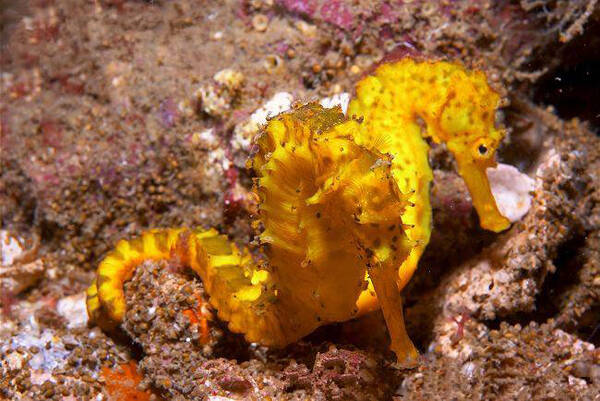Tiger tail seahorse, Latin name Hippocampus comes, foreign name Tiger tail seahorse, is one of the species of Syngnathidae in the order Acanthopterygii of the class Actinopterygii.

Tiger tail seahorses usually appear in pairs, are carnivorous, feed on small crustaceans, are nocturnal, and can be used as ornamental fish. When hunting, they can only rely on sneak attacks and camouflage, fixing themselves on a piece of coral and creating camouflage by changing their body color.
Tiger tail seahorses are monogamous. Females lay eggs in the male seahorse's pouch, which is then nurtured by the male. Newly hatched seahorses are 10 mm long. Male tiger tail seahorses can conceive multiple times throughout the year, with about 350 seahorses hatched each year. Depending on where they live, tiger tail seahorses live 2-5 years.
The IUCN Red List lists them as vulnerable (VU).
Protect wildlife and stop eating game.
Maintaining ecological balance is everyone's responsibility!